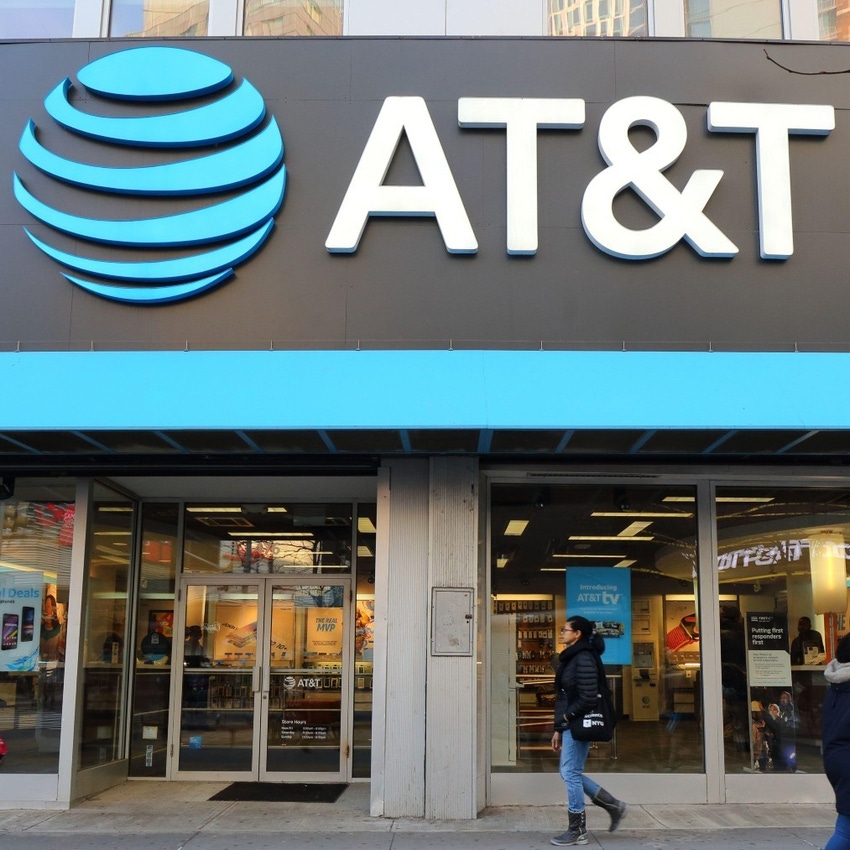Unpacking the math behind AT&T's 5G and fiber spending
AT&T hopes to cover 130 million people with midband 5G by the end of this year, and 30 million locations with fiber by the end of 2025. However, the details of that buildout are somewhat fuzzy.

AT&T executives have made it clear that the company's network-spending priorities center on expanding its 5G and fiber networks. However, the exact details of that effort have sparked consternation among some financial analysts tasked with modeling AT&T's capital expenses (capex).
"AT&T has emphasized the expansion of the company's fiber footprint as core to the company's strategy going forward. We believe, though, that the company's fiber build pace has likely peaked, and is likely to slow from 2022 levels going forward," wrote the financial analysts at Evercore ISI in a recent note to investors.
The Evercore ISI analysts are not alone.
"Our industry checks suggest AT&T spending has slowed...We do not believe the carrier has altered its network evolution plans or goals; rather, the slowing reflects its prioritization of meeting cash flow targets and its ability to reduce inventory," wrote the financial analysts at Raymond James in a recent note to investors.
The situation will likely have a significant effect on AT&T's 5G and fiber equipment vendors including Nokia, Ericsson, Corning and others. After all, AT&T is in the midst of what is widely regarded as the biggest fiber network expansion project in the US, and it's also one of the nation's three biggest 5G network operators.
Figure 1:  (Source: Robert K. Chin - Storefronts/Alamy Stock Photo)
(Source: Robert K. Chin - Storefronts/Alamy Stock Photo)
AT&T, for its part, is scheduled to release its fourth quarter financial results next week, and it will likely provide further details then.
The capex numbers
During recent investor events, AT&T CFO Pascal Desroches has offered a relatively clear look at AT&T's overall capex plans. For example, in November he said the company remains on track to spend a total of $24 billion on 5G and fiber capex during 2022. However, he confirmed the company's spending would dip in the fourth quarter, from around $6.8 billion in the third quarter to around $4.5 billion in the fourth quarter.
That pullback is part of the reason that AT&T still believes it can reach its goal of generating $14 billion in free cash flow during 2022.
"We expect AT&T will close out 2022 with capex of $19.4 billion, consistent with management's guidance for $24 billion excluding $4 billion of vendor financing. We believe AT&T remains focused on closing its 5G gap with competitors," wrote the Raymond James analysts.
The findings are noteworthy, considering AT&T stumbled out of the midband 5G starting blocks. Company officials said last year that AT&T would not meet its goal of covering 70 million to 75 million people with C-band connections by the end of 2022, blaming supply chain issues. And at the beginning of 2022, AT&T launched C-band services across "limited parts" of just eight US cities. However, AT&T in October confirmed the company covered 100 million people with its midband 5G network, and would raise that total to 130 million people by the end of 2022.
To be clear, AT&T isn't the only company planning to reduce its overall capex as it finishes its midband 5G buildout. Verizon and T-Mobile have signaled similar efforts.
Broadly, though, AT&T's capex figures account for spending across a wide range of projects. And according to the analysts at Evercore, AT&T's fiber spending is poised to slow.
The fiber calculations
AT&T has made no secret of its intention to build fiber to 30 million locations by the end of 2025. As of the end of the third quarter of 2022, the company had reached 21.5 million (3 million business and 18.5 million residential locations) of that goal.
At the same time, AT&T is shuttering roughly 60 million copper locations, and its overall fiber-expansion plan will leave 15 million of those copper locations without a fiber replacement. AT&T has said it might offer fixed wireless services to those 15 million locations previously served with copper.
In a lengthy writeup, the analysts at Evercore argued that AT&T's fiber-expansion plans – from today to 2025 – are not well understood. They wrote that the company plans to reach 25 million residential locations and 5 million business locations with fiber by 2025, for a total of 30 million locations.
"We estimate the company built 650k locations in 4Q22 (150k business, 500k residential), reaching just under 22.2M locations at YE22, and 3.2M incremental locations built in 2022 as a whole. For 2023E, we're forecasting the company to build 2.8M locations (2.2M residential, 600k business), a ~400k YoY slowdown in construction. Keeping to that pace for 2024E and 2025E would take AT&T to 30.6M locations (25.6M residential and 5M business) by YE25, slightly ahead of the company's target 30M locations," they wrote.
They noted that Wall Street generally expects AT&T to build another 9.3 million residential fiber locations by 2025 – but that they expect the total will be more like 6.6 million. "We believe this disconnect is due to a lack of clarity as to whether the 30M target reflected only residential builds (as it had initially appeared) or residential and business locations (as the company has since clarified)," the analysts wrote.
Finally, the analysts argued that AT&T's new fiber joint venture with private equity company BlackRock will ultimately cover 1.5 million locations, resulting in 600,000 total customers. Due to the design of the companies' joint venture, the capex related to that effort will not sit on AT&T's books, but the customers will.
Broadly, fiber providers like AT&T have been working to stretch fiber connections around the country. According to the FCC's latest numbers, fiber-to-the-premises (FTTP) connections grew from 16.3 million to 24.2 million, up 49%, between the end of 2019 and the end of 2021. Separately, the Fiber Broadband Association, citing data from RVA LLC Market Research & Consulting (RVA), reported that US fiber providers passed 7.9 million additional homes in 2022 – "the highest annual deployment ever, even with challenges in materials supply chain and labor availability," according to the association.
Related posts:
— Mike Dano, Editorial Director, 5G & Mobile Strategies, Light Reading | @mikeddano
About the Author(s)
You May Also Like



.jpg?width=300&auto=webp&quality=80&disable=upscale)








